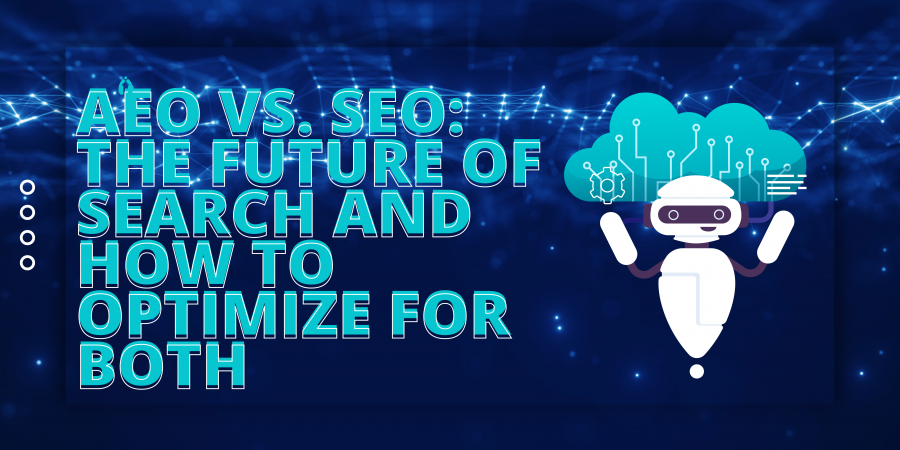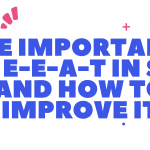AEO vs. SEO: The Future of Search and How to Optimize for Both
The online world is changing at a rate never seen before, and search engines are leading the charge. From the original Search Engine Optimization (SEO) to the new terminology of Answer Engine Optimization (AEO), how people use search engines is shifting. As artificial intelligence (AI) becomes more integrated into search technologies, businesses must adapt to stay competitive. In this blog, we’ll explore the differences between AEO and SEO, why AEO matters in the AI-powered search era, and how to optimize for both. —
Understanding the Evolution of Search: From SEO to AEO
Search engines have evolved a lot since their launch. In the past, SEO was all about making websites more search engine-friendly to rank them higher on search engine results pages (SERPs) for certain keywords. But with the advent of AI and machine learning, search engines such as Google are no longer just fetching information—they’re interpreting user intent and providing direct answers.
This change has created Answer Engine Optimization (AEO), a new methodology that is all about delivering brief, accurate answers to the questions of users. As voice assistants and AI-based search engines such as Siri, Alexa, and Google Assistant gain increasing popularity, AEO is transforming the way businesses approach search optimization.
What is SEO?
SEO, or Search Engine Optimization, is the process of optimizing web pages to make them more visible on search engines. The objective is to rank higher for related keywords and receive organic traffic. Some of the most important aspects of SEO are:
Keyword Research: Determining what terms users are looking for.
- On-Page Optimization: Optimizing meta tags, headers, and content for target keywords.
- Technical SEO: Ensuring the website is crawlable, fast, and mobile-friendly.
- Backlinks: Building high-quality links to improve domain authority.
- Content Creation: Producing valuable, relevant content that aligns with user intent.
SEO has been the cornerstone of digital marketing for decades, but the rise of AI is pushing it to evolve.
What is AEO?
Answer Engine Optimization (AEO) is all about optimizing content in a way that answers users directly. While SEO targets ranking sites, AEO targets placing content to be listed in answer boxes, voice responses, and artificial intelligence-generated responses.
AEO is fueled by growing voice search and AI-based tools such as ChatGPT, Bing AI, and Google’s Bard. These tools value brief, accurate, and contextually applicable answers more than standard web pages.
For instance, when you query a voice assistant, “What’s the capital of France?” it doesn’t send you to a website—it just responds, “The capital of France is Paris.” That is AEO.
Important Differences Between SEO and AEO
Though SEO and AEO have some things in common, they also have some important differences:
| Aspect | SEO | AEO |
|---|---|---|
| Goal | Rank higher on SERPs | Provide direct answers to queries |
| Content Format | Long-form articles, blogs, web pages | Concise, structured answers |
| Search Intent | Informational, navigational, transactional | Focused on quick, factual answers |
| Optimization Focus | Keywords, backlinks, site structure | Featured snippets, voice search, structured data |
| User Interaction | Clicks to visit a website | Instant answers without clicks |
Why AEO Matters in the AI-Powered Search Era
The advent of AI-powered search engines and voice assistants has made AEO more crucial than ever. Here’s why:
- 1. Voice Search Growth: Over 50% of searches are expected to be voice-based by 2024. Voice queries are often conversational and require direct answers.
- 2. Featured Snippets: Google’s “Position Zero” is highly coveted, as it provides instant visibility without requiring a click.
- AI Chatbots: Tools like ChatGPT and Bard are changing how users interact with information, prioritizing quick, accurate responses.
- User Expectations: Current users expect speedy, pertinent answers. If your content fails to fulfill this need, you are in danger of losing traffic to competitors.
Optimizing for Both AEO & SEO Best Practices
Businesses need to optimize for SEO and AEO to thrive in the future of search. The following are some methods to apply:
- 1. Tap Structured Data: Apply schema markup to enable search engines to better comprehend your content and show it in rich snippets or answer boxes.
- 2. Optimize Featured Snippets: Develop content that explicitly answers frequently asked questions in brief form (e.g., bullet points, tables, or short paragraphs).
- Optimize for Voice Search: Target natural language, long-tail keywords, and conversational phrases.
- Develop High-Quality Content: Whatever it is, whether a blog post or a quick answer, make sure your content is relevant, accurate, and useful.
- User Intent Focus: Know what users want and frame your content accordingly to serve their purpose.
- Utilize FAQ Sections: Have question-and-answer structures on your site to give it higher chances of appearing in answer boxes.
- Track Performance: Employ tools such as Google Search Console to monitor your performance on featured snippets and voice search listings.
Conclusion: The Future of Search
The future of search is not selecting between SEO and AEO—it’s about maximizing both strategies to remain at the forefront. With AI continuing to influence how people use search engines, companies need to shift to accommodate changing expectations.
By optimizing for classical SEO but accepting the premises of AEO, you can guarantee that your content is accessible, pertinent, and useful in a world driven by AI. The secret lies in concentrating on intent, taking advantage of structured data, and publishing high-quality content that provides questions and answers.
The search landscape is evolving, but you can prosper in this new era with the proper strategy. Begin optimizing for SEO and AEO today to be positioned in the future of search.


